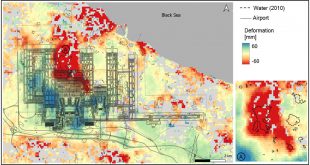Fresenius Environmental Bulletin, 26(1), 405-412. (2017)
The role of spatial analysis for aquaculture: a case study of Keban Dam lake
Sivri, N., Seker, D.Z., Alganci, U., Basusta, N., Basusta, A., Akgun, H
Abstract: Turkey is divided into 25 hydrologic basins depending on the topographic structure. These basins have different productivities and potentials in relation with the annual rainfall they receive. Among them, Firat-Dicle Basin that constitutes approximately 47.7% of the water potential of the whole country, takes the first place in terms of water productivity with 52.94 billion m(3). Fishery is the most effective activity within the different usage areas in these basins. Determination of the current situation of the fishery facilities in the region, the potential of aquaculture, point and spread pollution load, determined pressures-effects and hot spots have great importance in the management of the basin. Within the scope of this study, remote sensing being one of the current and quick resulting technologies, and GIS were used in order to provide information about the current usage of basin’s water resources in terms of water products and sustainable management. Apart from the pressures and impacts on the ecosystem, the possible effects of total N/P load were also calculated in order to improve the existing potential, to control the feasibility of decisions to be made about the region and to enlighten decision makers are among the primary objectives.

 CSCRS İTÜ – Center for Satellite Communications and Remote Sensing
CSCRS İTÜ – Center for Satellite Communications and Remote Sensing 